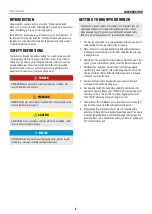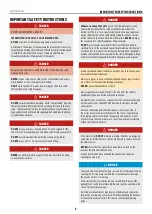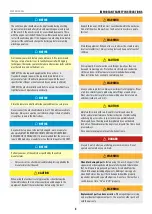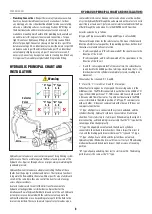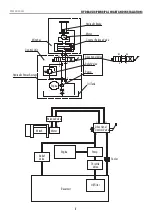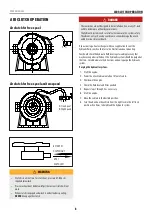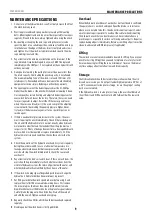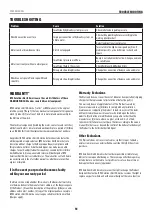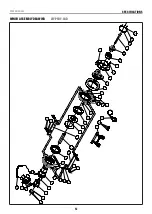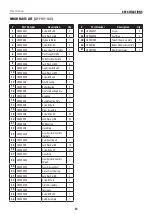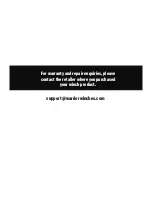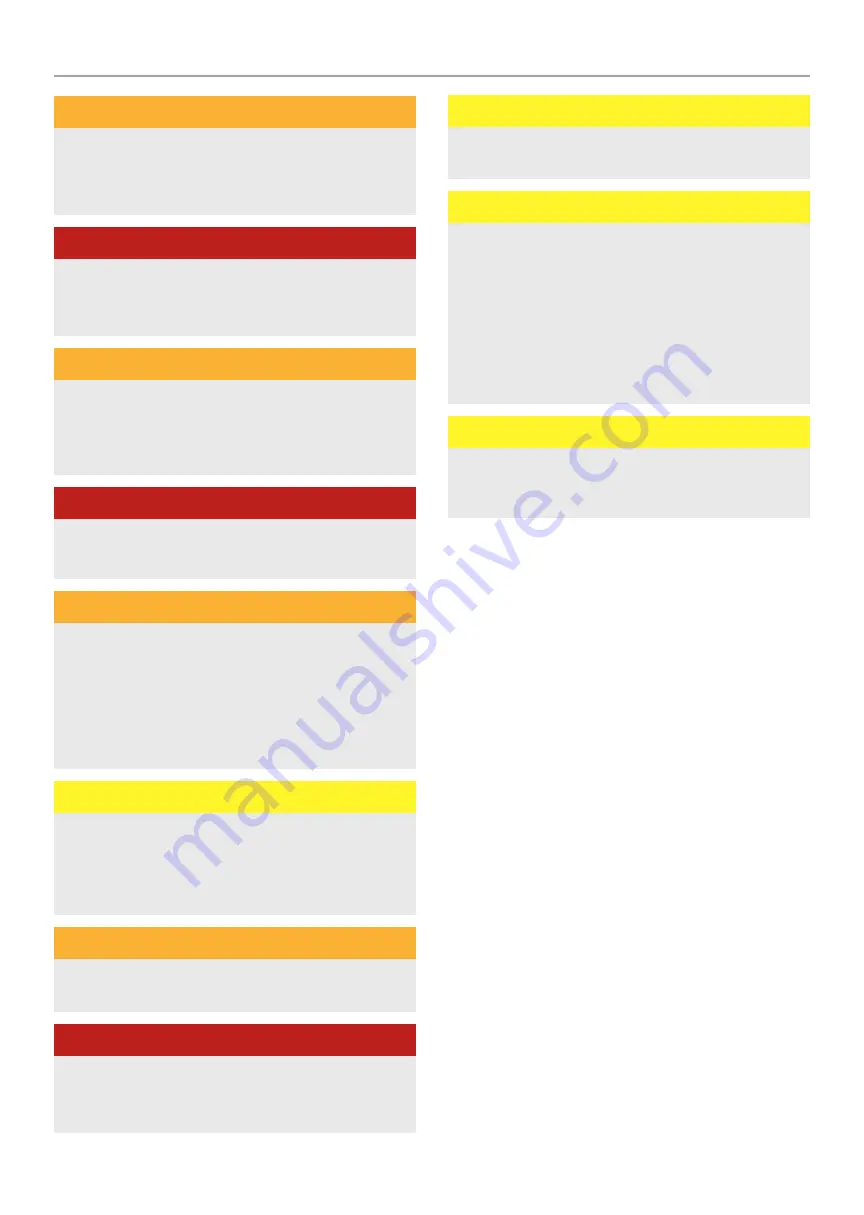
WINCH MANUAL
IMPORTANT SAFETY INSTRUCTIONS
5
WARNING
Do not operate tool if under the influence of alcohol or drugs.
Read warning labels on prescription to determine if your judgment or
reflexes are impaired while taking drugs. If there is any doubt, do not
operate the tool.
DANGER
Keep hands and body away from Fairlead (cable intake slot) when
operating.
Always secure vehicle in position before using winch.
WARNING
Be certain the winch is properly bolted to a structure (or vehicle) that
can hold the winches maximum rated load.
Do not use inappropriate attachments to extend the length of the
winch cable.
DANGER
Never lift people or hoist loads over people or lift live animals.
Never come in between the winch and the load when operating.
WARNING
Do not apply any loads to the winch when cable is fully extended
past the safety mark. Keep at least 5 full wraps of cable on the spool,
(Usually marked red on the winch cable at the drum end.)
After moving any piece of equipment with the winch, secure the the
equipment in place. Do not rely on the winch to hold for an extended
period of time nor whilst in transport, winches are not securing
device, By doing so will void any warranty
CAUTION
Examine winch before using. Components may be affected by
exposure to chemicals, salts, and rust.
Do not cross over or go underneath winch cable when under load.
Use gloves while handling cable.
WARNING
Never operate winch if cable shows any signs of weakening, such as
knotting or kinking. If it does you must replace immediately.
DANGER
Do not move your vehicle with the cable extended and attached to the
load. You could easily exceed the winch rating and snap the cable.
When the vehicle is parked on an incline you should use wheel chocks.
CAUTION
Always re-spool cable neatly after any operation this will avoid any
winch cable misalignment for the next use
CAUTION
The winch cable must be wound onto the drum under a load of at least
10% of the rated line pull or the outer wraps will draw into inner wraps
and damage winch cable.
Before operating the winch under load you should check proper
function of the winch by engaging and disengaging the clutch, by
operating the directional controls, and operating the speed controls.
This will ensure that the winch is working properly and will help
prevent unintended damage and injury. Cycling the winch prior to
loading will also ensure the gears are properly aligned.
CAUTION
Batteries contain gases which are flammable and explosive. Wear eye
protection during installation and remove all jewelry. Do not lean over
battery while making connections.
WINCH ASSEMBLY AND MOUNTING
–
Installing:
Your new winch is designed with a bolt pattern that is
standard in this class of winch. A winch mounting kit may be available
that utilizes this bolt pattern, If you cannot find a kit locally, you may
have to have one engineered, contact a local engineering company.
If you utilize a mounting channel, you must ensure that it is mounted
on a flat surface so that the three major sections (motor, drum and
gear housing) are properly aligned. Improper alignment of the winch
will cause uneven distribution of load and damage the winch or
equipment. Mount the winch to the vehicle using high tensile steel
bolts. It should be aligned and secured to a solid part of the vehicle
(front or rear) where the full rated load will be evenly distributed
without causing damage to vehicle or equipment.
–
Mounting The Balance Valve:
The balance valve supplied should
be already connected to motor. Be sure the balance valve’s installing
direction meets hydraulic principal chart. Otherwise, the winch will
not reach the rated line pull, and it is also dangerous for winch to
power off the cable with heavy load. If this symptom happens, simply
disconnect the balance valve: exchange the oil hole between hydraulic
motor and balance valve, while your winch is working in different
direction, change A→C1,B→C2 into A→C2,B→C1. And reconnect it. If
your winch is supplied with a balance valve it will have been factory
connected with the motor.


